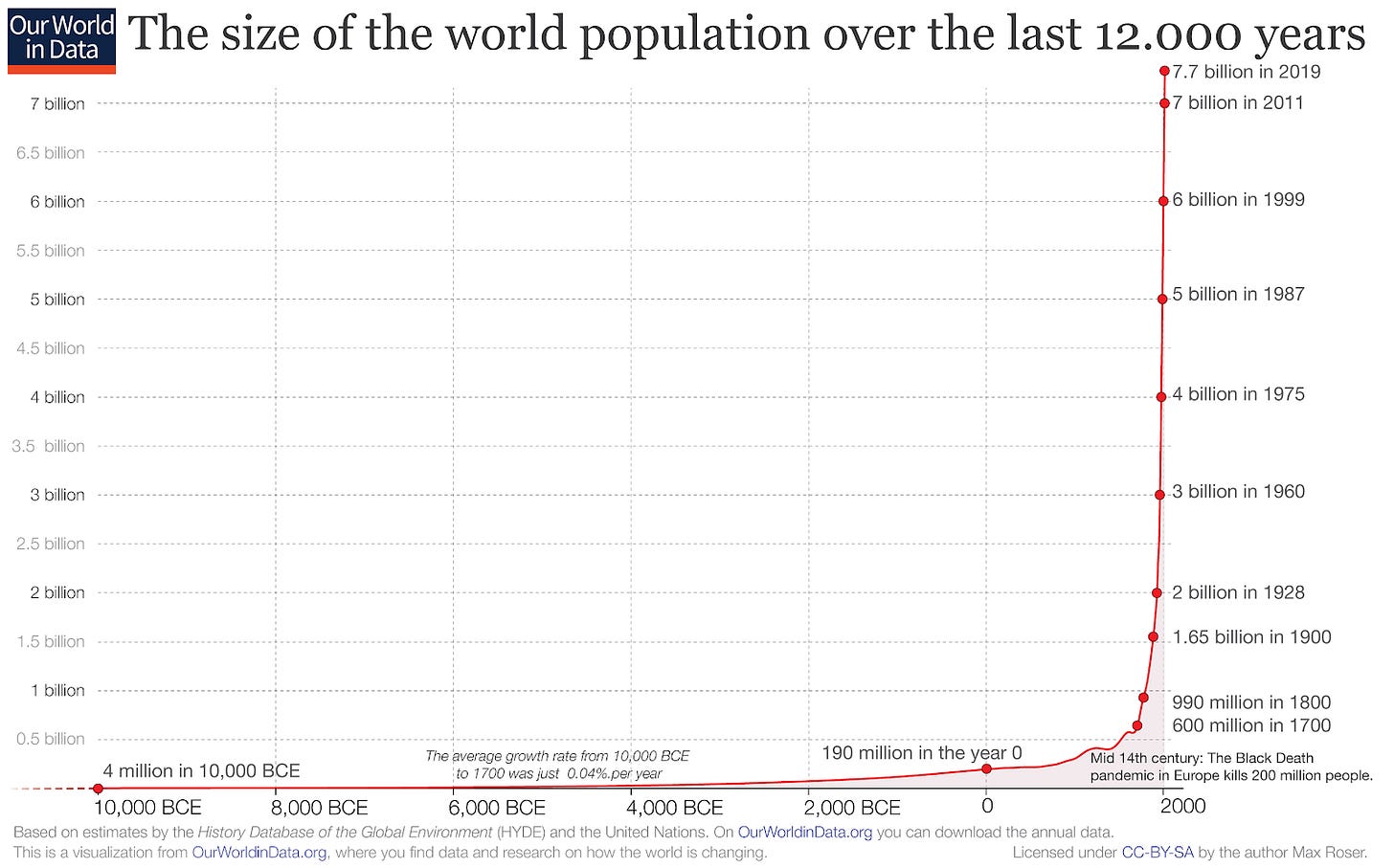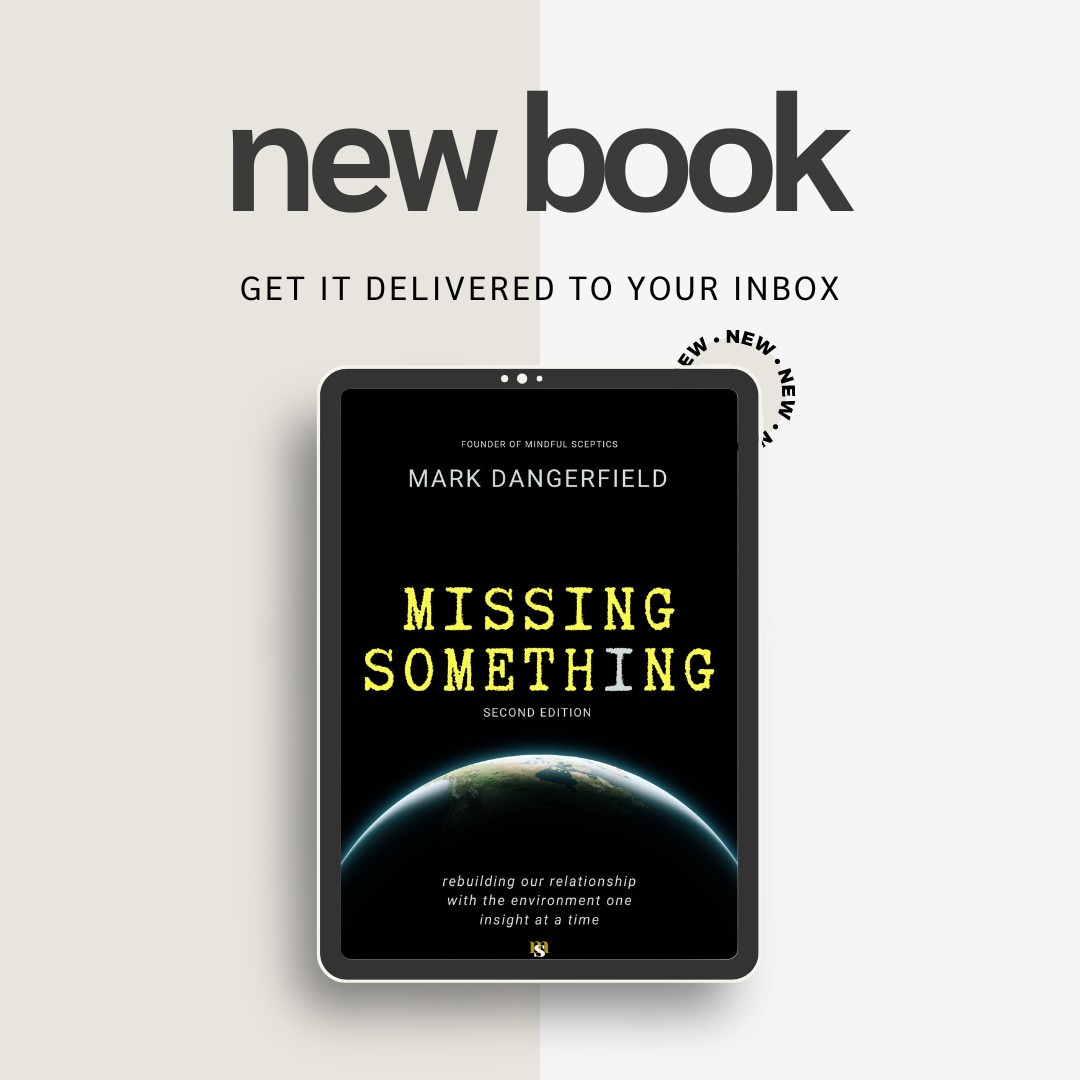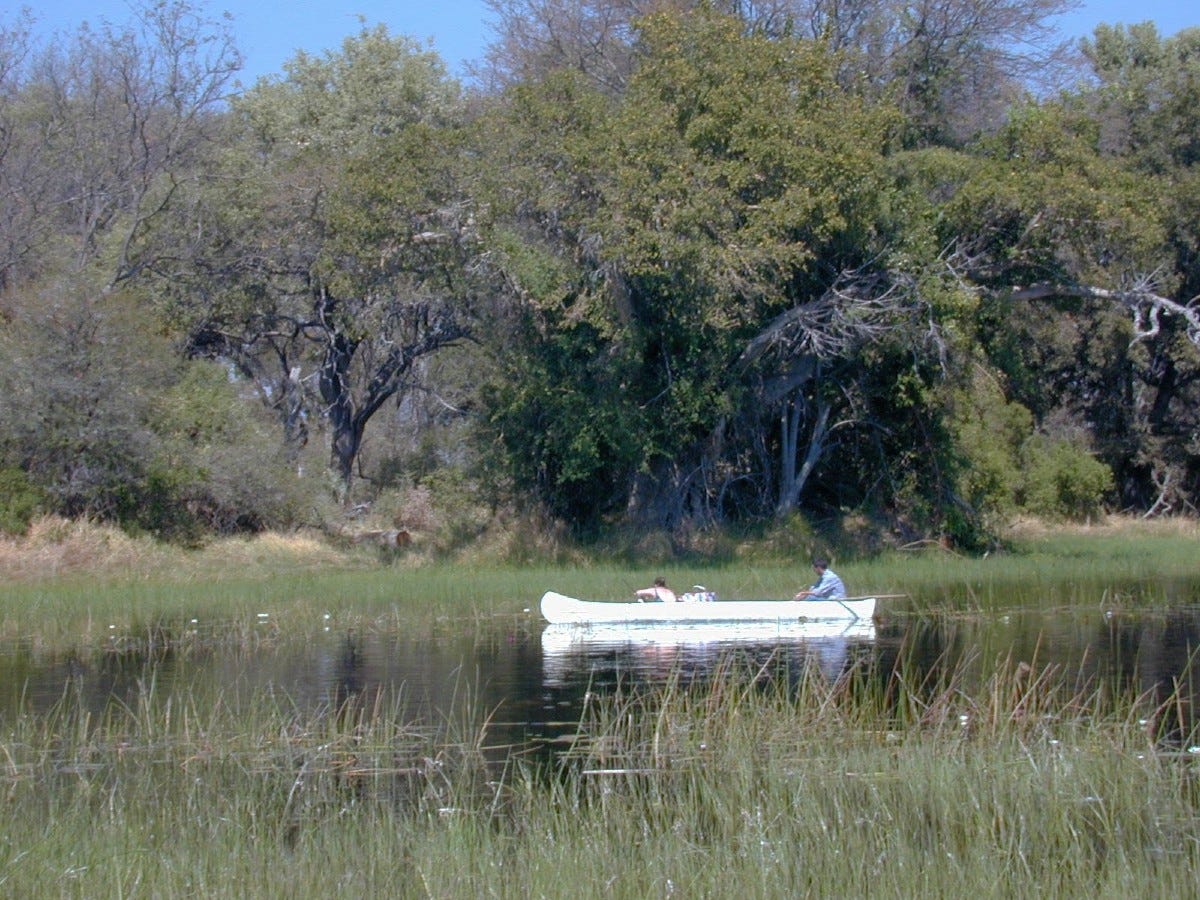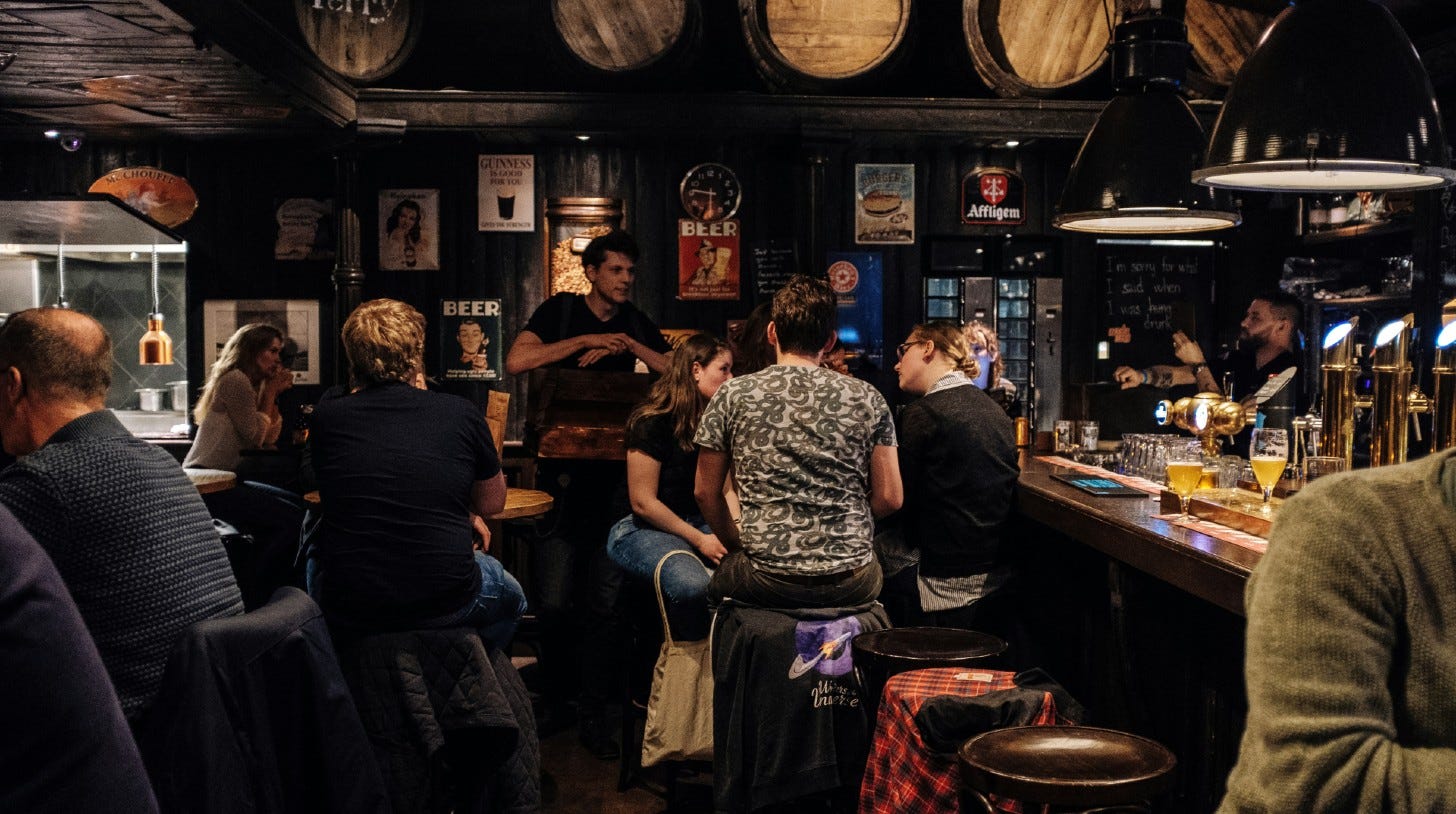Beat Eco-anxiety with Mindful Scepticism
Cultivate resilience in the face of environmental challenges
You’ve felt that knot in your stomach while scrolling through the headlines. Perhaps it's more of a creeping sense of dread about the future of our planet. Maybe you have a touch of eco-anxiety.
You're not alone.
Studies in Australia have found around 75% of young people reported being worried about climate change. Almost half the 10,000 young people in a 2021 global survey said their feelings about climate change negatively affected their daily lives. It’s a thing.
But what if there was a way to navigate these challenging emotions and everything that triggered them?
Mindful scepticism, that delicious combination of curiosity, critical thinking, and present-moment awareness, offers a salve to eco-anxiety. It encourages us to question our assumptions, evaluate evidence objectively, and remain open to new information—all while staying grounded in the here and now. It's obvious, really, and yet, when applied to environmental concerns, we get more balance and less fear.
In this issue of Mindful Sceptic, we'll explore the benefits of critical acumen and mindful awareness for managing eco-anxiety.
Perhaps it is possible to turn angst around.
Do you suffer from eco-anxiety?
In 2017, the American Psychiatric Association (APA) described eco-anxiety as a chronic fear of environmental doom.
The knot in the stomach, the nervous twitch, the odd nightmare brought on by the fear of environmental damage or ecological disaster.
This sense of anxiety is based mainly on the current and predicted future state of the environment and human-induced climate change. According to a 2018 national survey, almost 70% of people in the United States are worried about climate change, and around 51% feel “helpless.” A large-scale survey of 10,000 young people aged 16-25 across 10 countries found that 59% were very or extremely worried about climate change, with 45% reporting that their feelings about climate change negatively affected their daily lives.
That is a lot of people with anxiety, not so much for the loss of endangered species, but for the general health of the environment. Indeed, if you live in Beijing or Mumbai or many big cities where vehicle traffic and fossil fuel burning have created terrible air pollution, those issues are with you every day.
Sydney, known globally for its livability and iconic harbour views, was blanketed by acrid smoke from bushfires for weeks during the 2019-20 black summer. This gave the usually blue-sky city a constant reminder of the menace on its doorstep. By the end of the summer, an area of forest and woodland the size of Syria had gone up in smoke.
There was also plenty of anxiety in the air. One mega-blaze burned out just a few kilometres from where I live. Everyone was on edge for weeks.
Eco-anxiety can lead to various psychological symptoms, including worry, fear, anger, grief, and feelings of powerlessness. It shows weak to moderate associations with general depression, anxiety, and stress. While eco-anxiety is not yet classified as a clinical disorder, its widespread prevalence and potential impact on mental health and well-being make it a significant concern.
Look away now
As an ecological consultant, I spend much time understanding the numbers and working out how much stress and strain the environment is under. Eight billion human souls, their livestock and companion animals require many ecosystem services. It always makes for depressing reading when the numbers show how precarious we are as the planet is used, and often abused, to support 8 billion people.
As of the latest comprehensive assessment in 2022, six out of the nine planetary boundaries have been breached—climate change, biosphere integrity (biodiversity loss), land system change, biogeochemical flows (nitrogen and phosphorus cycles, novel entities (including plastics and other human-made chemicals) and freshwater change (added in 2022). The three still within bounds are stratospheric ozone depletion, atmospheric aerosol loading and ocean acidification, although this one is close.
Crossing these boundaries doesn't necessarily mean immediate catastrophe, but it does indicate that we've moved into a zone of increasing risk for large-scale, potentially irreversible environmental changes.
But these global boundaries are a bit abstract. Let’s try a graph and a statistic that are enough to freak anyone out.
Look away now if you have any anxiety, but here is the hockey stick—well, more like a vertical take-off graph of the human population since we invented agriculture 12,000 years ago.

Much of the eco-anxiety is reported as a fear of climate change, and that can indeed be frightening. But the underlying unease is an innate understanding of this graph and its consequences.
Then, there is the statistic that 96% of mammal biomass on Earth comprises humans and their livestock. This leaves only 4% of mammal biomass for all other wild mammal species combined, mainly because agriculture occupies three-quarters of the Earth's habitable land area. This means that humans have directly and indirectly appropriated much of the Earth's biomass.
Not so scary view
The other way to look at human population growth is that it’s incredible. How on earth can we produce food at the volumes that we do and channel that food, for the most part, towards the people who need it when there are so many people to feed? It is extraordinary.
Humanity continues to achieve what seems unachievable.
Techno-optimists generally view population growth as a positive force for human progress and innovation rather than a threat—a larger population leads to more minds working on solutions to global challenges, driving technological advancements and economic growth. Along with economists like Julian Simon, who argued that human beings are the "ultimate resource", optimists believe that more people means more potential for creativity, problem-solving, and entrepreneurship. This increased human capital, they argue, leads to accelerated technological progress and economic growth, which in turn can address environmental concerns and improve the quality of life for all.
According to this perspective, historical evidence suggests that population growth has coincided with remarkable improvements in living standards, life expectancy, and overall human welfare. Techno-optimists point out that despite predictions of widespread famine and resource depletion, human ingenuity has consistently found ways to increase food production, improve resource efficiency, and develop new technologies to meet the needs of a growing population. There is no need to worry.
It’s true. Many of us live with more material well-being than our parents and grandparents.
Techno-optimists also contend that population growth can drive positive feedback loops in innovation and economic development. A larger population creates bigger markets, supporting more specialised industries and fostering more incredible innovation. This growth leads to further improvements in living standards and technological capabilities, creating a virtuous cycle of progress… and endless opportunities to make a buck.
There is no need to worry; humans can fix anything. And presumably, optimists don’t suffer eco-anxiety.
Do you feel better now you know there is a techno-fix?
No, me neither.
We cannot solve our problems with the same thinking we used when we created them.
Albert Einstein
We need something more positive and, ironically, more constructive than trusting in infinite growth on a finite planet.
Looking for the upside—the eco-anxiety antidote
George Monbiot discusses a recharge requirement as a solution to eco-anxiety. He suggests spending time with nature to recharge the human spirit because he says, “We could all do with some of that.” His personal solution is to jump in his sea kayak and paddle about in the ocean.
Just the other day, on a walk down the road from my house, I stopped to watch a fairy wren bounce around in the undergrowth. For a moment, I was disconnected from all of the craziness in the world. It was a true pleasure.
Nature is very good at that. It reminds us where we come from and that we are part of this extraordinary planet.
Not separate from it and not to have dominion over it.
Eco-therapy, which involves spending time in nature and developing a stronger connection to the environment, has shown promise in reducing anxiety and improving overall mental health. Some therapists are now specialising in climate-related mental health issues, offering cognitive-behavioural techniques to manage anxious thoughts and develop coping strategies.
The reality is that this eco-anxiety is profound and more detrimental to our psyche than we would imagine. It can take more than a sojourn into nature to fix.
One possible cure is to empower individuals through education and action.
Accurate information about environmental challenges and actionable steps to act on what we know can help transform anxiety into productive energy. For example, organisations like the Climate Reality Project offer training programs that equip participants with the knowledge and tools to become effective climate advocates in their communities.
Joining local environmental groups or participating in community gardens can help individuals feel less isolated in their concerns and more connected to like-minded people. The Transition Network, for instance, brings together communities worldwide to build resilience and reduce carbon emissions through local initiatives. These connections can provide emotional support and a sense of shared purpose.
Advocacy for systemic changes and support for environmental policies can help alleviate eco-anxiety by creating a sense of progress and hope. If you can find one, you can vote for environmentally conscious candidates or participate in peaceful demonstrations. Organisations like 350.org have successfully mobilised people worldwide to push for bold climate action, demonstrating the power of collective efforts.
But take care. For example, ‘Just stop oil’ is, at best, naive and, at worst, will lead to extremism and isolation.
A practical salve is to find a balanced media diet that includes positive environmental news and success stories to counteract the often overwhelming negativity surrounding ecological issues. Platforms like Good News Network and Reasons to be Cheerful regularly feature stories of environmental progress and innovation, helping to maintain perspective and inspire optimism.
These conventional solutions—individual empowerment, community engagement, psychological support, systemic advocacy, and balanced information—are known to mitigate eco-anxiety primarily by taking to task the environmental challenges that fuel it.
And then there is mindful scepticism.
Applying Mindful Scepticism to Eco-Anxiety
Mindful scepticism, that delicious combination of curiosity, critical thinking, and present-moment awareness, offers a salve to eco-anxiety. It encourages us to question our assumptions, evaluate evidence objectively, and remain open to new information—all while staying grounded in the here and now.
It can be a powerful tool to beat eco-anxiety because it promotes balanced and constructive engagement with environmental issues.
Here's how you can apply this approach in three steps:
Critically evaluate
Rational analysis
Awareness
Critically Evaluating Environmental News and Claims
Much of our eco-anxiety comes from the information we receive, and these days, there is plenty of it.
Start by questioning the sources of environmental information you encounter. Is the news coming from a reputable scientific journal, a peer-reviewed study, or a sensationalist headline?
Look for consensus among experts rather than isolated claims. When you encounter a worrying statistic or prediction, take a moment to investigate its context. What's the time frame? What assumptions were made?
Remember, it's okay to say, "I don't know enough about this yet", and seek more information before forming an opinion.
Practice fact-checking and cross-referencing information from multiple sources. Look for primary research rather than relying solely on interpretations. When possible, examine long-term trends rather than isolated events. This broader perspective can help counteract the tendency to catastrophise based on single incidents.
Do these fact checks even a little; catastrophe claims almost always fade.
If you don’t have the time to critically evaluate—or access to a chatbot—just do what Australians often do: the pub test.
"The pub test" is a colloquial Australian phrase that refers to how ordinary Australians would receive an idea, policy, or action in a casual pub setting. It's essentially a measure of common sense and public acceptability. For example, a politician claiming expensive personal holidays as business expenses might be technically within the rules but would likely "fail the pub test". A CEO receiving a large bonus while their company lays off workers might "fail the pub test". Complex legal justifications for questionable behaviour might not pass "the pub test" even if they satisfy legal requirements.
Balancing Emotional Responses with Rational Analysis
Eco-anxiety is an emotional response, and that is precisely as it should be. Humans are emotional creatures.
Acknowledge your emotional responses to environmental news—they're valid and important. However, don't let them be the endpoint. Use these feelings as a starting point for inquiry. If you feel anxious about a particular environmental issue, channel that energy into learning more about it.
Psychologists have many tools for identifying one's feelings. My wife, a couples therapist, has shelves full of books describing many of them.
An accessible one to apply when the latest environmental disaster has flooded the feed is the "5 Whys" technique. Ask yourself "why" five times about your emotional response. This can help you dig deeper into the root causes of your anxiety and often leads to a more nuanced understanding of the issue.
As you do this, practice self-compassion. Feeling concerned about the environment is natural, but berating yourself won't solve the problem.
The mindful sceptic recognises the emotion and then applies logical thinking to make a decision or handle situations. The rational part examines the evidence for the stated facts, considers the long-term consequences, and is sure to evaluate multiple perspectives objectively.
First feel, then think, then decide.
The goal isn't to suppress feelings or ignore facts but to let them work together—emotions guide what's important, while reason helps determine the best path forward. Think of it as having a good navigation system (emotions) and a reliable map (rational analysis).
Techniques for Maintaining Awareness Without Succumbing to Anxiety
The challenge is that information is helpful against anxiety, but when it comes to the environment, too much triggers it.
Maintaining awareness without succumbing to anxiety is about staying informed and conscious of challenges while protecting your mental well-being. The key is finding the sweet spot between being informed and engaged while not letting awareness transform into perpetual anxiety or paralysis. It's about staying conscious without being consumed.
A mindful sceptic questions with curiosity. We want to know what is happening and the evidence for the causes and consequences. We are always asking why.
However, you can’t do this for everything.
A balanced information intake is essential; you can do this by setting boundaries on your consumption of environmental news. While it's vital to stay informed, constant exposure to negative news can be overwhelming. Consider designating specific times to update yourself on environmental issues, balancing this with periods of stepping back and focusing on local, tangible actions you can take.
A simple cheat is to choose reliable information sources. I don’t just mean ignore everything on the socials or the right-wing media outlets. Be more granular. If a TicTok influencer is making sense, has some credentials and passes the pub test then listen to them. Just remember it is TicToc.
The mindful part of the sceptic knows the value of focusing on what you can control. When we direct our energy toward things within our influence—our responses, decisions, daily habits, and immediate environment—we create meaningful change and build resilience. We are also more likely to think of a solution than a problem because we can effect the change.
Fixing on things beyond our control—other people's choices, global events, or past situations—only drains our mental resources and increases stress without producing valuable outcomes.
This doesn't mean ignoring bigger challenges but rather channelling our finite time and energy into areas where we can make a real difference—the tall oaks from acorns idea.
One practical tip is to keep the broader context in mind while focusing on what you can control. I always remind myself of the staggering statistic that around 4 billion people, half of the world's population, live on less than $10 per day and that 700 million people live in extreme poverty on less than $2.15 per day. It reminds me not to always think like the privileged Westerner that I am.
Awareness does not mean constant worry. Among many benefits it provides a clearer understanding of options.
I have assumed with these tips that eco-anxiety is not debilitating; more a niggle than a panic attack. However, grounding techniques are always helpful when needed.
Mindfulness meditation can be beneficial here. Practice observing your thoughts and feelings about environmental issues without becoming entirely absorbed. You might try a "leaves on a stream" visualisation, imagining your anxious thoughts as leaves floating on a stream.
I know it's odd coming from a scientist, but it does work.
There is one specific action to beat eco-anxiety with mindful scepticism. It’s been lost in the electronics and artificial physicality of our modern existence and getting it back will do wonders.
Cultivate a practice of gratitude for nature.
Acknowledge the beauty and resilience of the natural world around you regularly. This can help counterbalance the tendency to focus solely on environmental threats, but gratitude is more than that. It reminds us where we came from.
And because I am a scientist and starting to feel uncomfortable with all this gazing into myself, here is one bonus tip.
Remind yourself that uncertainty is a part of life and science. Embrace it as an opportunity for learning and growth rather than a source of anxiety.

Key Points
Eco-anxiety is a widespread and growing concern, affecting a significant portion of the global population, particularly young people. However, mindful scepticism offers a robust framework for managing this anxiety by combining critical thinking with present-moment awareness. This approach doesn't deny the reality of environmental challenges but provides tools to engage with them constructively, transforming paralysing fear into informed action. Questioning assumptions while maintaining awareness allows us to navigate environmental concerns without becoming overwhelmed.
In our information-rich world, managing environmental news and data consumption is crucial for maintaining mental well-being while staying informed. The article suggests practical approaches like setting specific times for news updates, applying the "pub test" to evaluate claims, and maintaining perspective through fact-checking. This balanced approach to information intake helps us stay aware of environmental issues without succumbing to constant anxiety, enabling more effective engagement with environmental challenges.
Understanding and working with emotional and rational responses to environmental challenges is essential for effective engagement. Emotions serve as valuable signals guiding our attention to important issues, while rational analysis helps determine appropriate responses. Techniques like the "5 Whys" and acknowledging feelings before moving to analysis allow us to develop more nuanced and practical approaches to environmental challenges, avoiding emotional overwhelm and detached intellectualisation.
Direct connection with nature and a gratitude practice are essential to best eco-anxiety. Regular natural experiences, whether through structured eco-therapy or simple activities like observing local wildlife, help maintain perspective and emotional resilience. This connection reminds us of our place within natural systems. It provides tangible experiences of environmental health and resilience, balancing against the often abstract and overwhelming nature of global environmental challenges. When combined with mindful scepticism, this nature connection helps transform eco-anxiety into a catalyst for positive change.
You might also like
Don't let environmental overwhelm hold you back.
Each week, our newsletter delivers practical tools for applying mindful scepticism to today's pressing ecological challenges. From breaking down complex environmental data to sharing evidence-based coping strategies, we're building a community of thoughtful environmental advocates.
In the next issue
Why do environmental targets keep failing? In the next issue of Mindful Sceptic, we'll challenge conventional wisdom about goal-setting in conservation. Through the lens of mindful scepticism, we'll explore how focusing on processes rather than targets could transform environmental action. From soil regeneration to urban forestry, discover real-world examples of success stories that threw away their targets and embraced natural processes instead. Learn why making a genuine difference might mean letting go of our obsession with numbers and reconnecting with nature's rhythms.
Sometimes the most valuable thing we can offer isn't another solution, but better questions.
If this exploration left you more curious than certain, more aware of complexity than convinced of simplicity, then something important just happened.
That's mindful scepticism in action.
Your support ensures I can keep asking the awkward questions and following the evidence wherever it leads.











